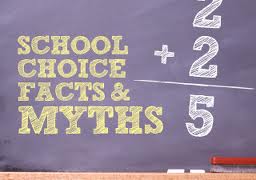 The assertion that school choice somehow exacerbates segregation and separatism in American society surprises me every time it pops up. The ideal of traditional public education, a “common school” available equally at no cost to all citizens to impart a high level of academics as well as a core set of American values, has always been a myth. Yet it has amazing staying power despite the facts.
The assertion that school choice somehow exacerbates segregation and separatism in American society surprises me every time it pops up. The ideal of traditional public education, a “common school” available equally at no cost to all citizens to impart a high level of academics as well as a core set of American values, has always been a myth. Yet it has amazing staying power despite the facts.
Put aside a hundred years of state-sanctioned racism that outlawed education for slaves, and then engendered “separate, but equal” schools for another 90 years until the 1954 Supreme Court decision banned the practice. Let’s look at how this “common school” system serves Americans now.
The statistics on K-12 education in the Department of Education’s "The Condition of Education, 2011" report are informative. Nationally, 31 percent of African-American students are in schools that have 75 percent or more African-American students. The figure is nearly 33 percent for Hispanic students. Nationally, 62 percent of whites attend a school with a population over 75 percent white, while those schools serve around 7 percent of the African-American and Hispanic populations.
When city demographics are analyzed, the segregation of traditional public schools dramatically jumps. Forty-two percent of African-Americans and 39 percent of Hispanics are in schools with 75 percent or more of those same students. Not surprisingly, school enrollment and especially urban school enrollment reflects how a public education monopoly assigns students to schools - by zip codes.
Another way to look at how this “common school” system is serving us is the distribution of the free and reduced lunch (FRL) population, which the Department of Education identifies as a proxy for low-income students. High-poverty elementary schools, those with 75 percent or more of an FRL population, enroll 45 percent of Hispanic students and 44 percent of African-American students. For whites, the enrollment is 6 percent in high-poverty schools. Nationally, urban areas account for 29 percent of our student population, yet 58 percent of all students in high-poverty schools live in our cities.
Combine this data with dropout statistics in the 40-60 percent range for inner-city minority populations, and abysmal academic outcomes for so many of the remaining students, and you have the “common school” myth stripped bare. (more…)